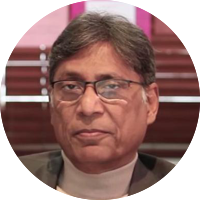Huma
Huma is said to be a divine bird that had its origins in Iranian folklore. Not only is this bird referred to in poetry but it is also mentioned in the Hindu scriptures. Legends have it that Huma was a magnificent bird which flew high in the sky but remained invisible to the human eye. There are many suppositions about Huma; some have suggested that it did not have feet while others believed that it had both the male and female natures rooted within its being. It has also been said that Huma grew in the air and when it used to lay an egg, the egg used to fall on the ground and just before hitting the ground, it used to crack and the chick used to fly back to its mother. Some have gone on to suggest further that the bird used to eat only bones and like the phoenix it would rise from its own ashes every hundred, or two hundred years. There is yet another belief that it was impossible to have even a glimpse of this bird but if someone could catch and kill this bird, in the rarest of the rare cases, the catcher would be doomed to death within the next forty days. A common thread running across different legends is that Huma represents compassion and is considered a symbol of prosperity. Persian literature represents the magical quality of Huma that anyone who comes under its shadow would become a king. The legend travelled so far and wide through time and place that Tipu Sultan, the ruler of Mysore, got placed a gem-studded replica of this bird in his throne.
Reference: Saaya Huma ka sar pe hai/Duniya ki daulat dar pe hai/Shahi tere dar ki gada/Tuu maal-o-za sar se maawara/Waali hai ik aqleem ka/Aur hukm bahr-o bar pe hai (Bismil Jaipuri), Aandhi ne un ruton ko bhi bekar kar diya/Jin ko kabhi huma sa parinda naseeb tha (Perveen Shakir), Qismat apni kahaan hai un jaisi/Jin ke sar pe huma ka saaya tha (Azra Naqvi), Paron se sar pe Huma karta tha magas raani/Bajaa us auj pe tha daawa-i-Sulemani (Mohammad Ali Tashna)Kya kya takallufat-e-rah-o-rasm-e shauq the/Kuchh din hamaare sar pe bhi saaya huma ka tha (Anisur Rahman)
Huma is said to be a divine bird that had its origins in Iranian folklore. Not only is this bird referred to in poetry but it is also mentioned in the Hindu scriptures. Legends have it that Huma was a magnificent bird which flew high in the sky but remained invisible to the human eye. There are many suppositions about Huma; some have suggested that it did not have feet while others believed that it had both the male and female natures rooted within its being. It has also been said that Huma grew in the air and when it used to lay an egg, the egg used to fall on the ground and just before hitting the ground, it used to crack and the chick used to fly back to its mother. Some have gone on to suggest further that the bird used to eat only bones and like the phoenix it would rise from its own ashes every hundred, or two hundred years. There is yet another belief that it was impossible to have even a glimpse of this bird but if someone could catch and kill this bird, in the rarest of the rare cases, the catcher would be doomed to death within the next forty days. A common thread running across different legends is that Huma represents compassion and is considered a symbol of prosperity. Persian literature represents the magical quality of Huma that anyone who comes under its shadow would become a king. The legend travelled so far and wide through time and place that Tipu Sultan, the ruler of Mysore, got placed a gem-studded replica of this bird in his throne.
Reference: Saaya Huma ka sar pe hai/Duniya ki daulat dar pe hai/Shahi tere dar ki gada/Tuu maal-o-za sar se maawara/Waali hai ik aqleem ka/Aur hukm bahr-o bar pe hai (Bismil Jaipuri), Aandhi ne un ruton ko bhi bekar kar diya/Jin ko kabhi huma sa parinda naseeb tha (Perveen Shakir), Qismat apni kahaan hai un jaisi/Jin ke sar pe huma ka saaya tha (Azra Naqvi), Paron se sar pe Huma karta tha magas raani/Bajaa us auj pe tha daawa-i-Sulemani (Mohammad Ali Tashna)Kya kya takallufat-e-rah-o-rasm-e shauq the/Kuchh din hamaare sar pe bhi saaya huma ka tha (Anisur Rahman)
Additional information available
Click on the INTERESTING button to view additional information associated with this sher.
About this sher
rare Unpublished content
This ghazal contains ashaar not published in the public domain. These are marked by a red line on the left.

